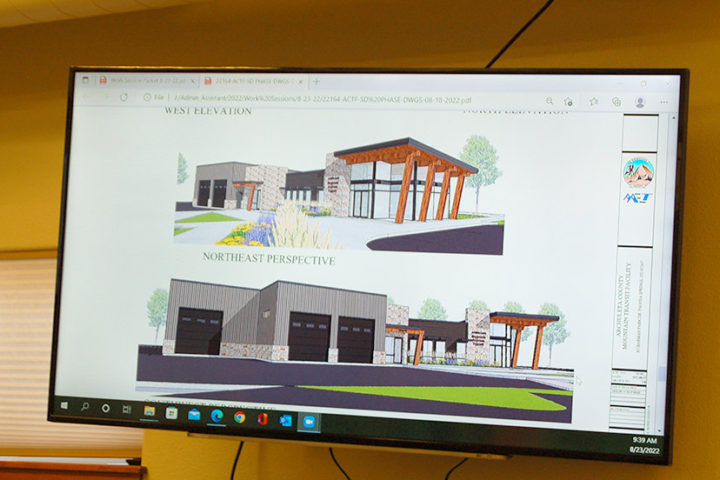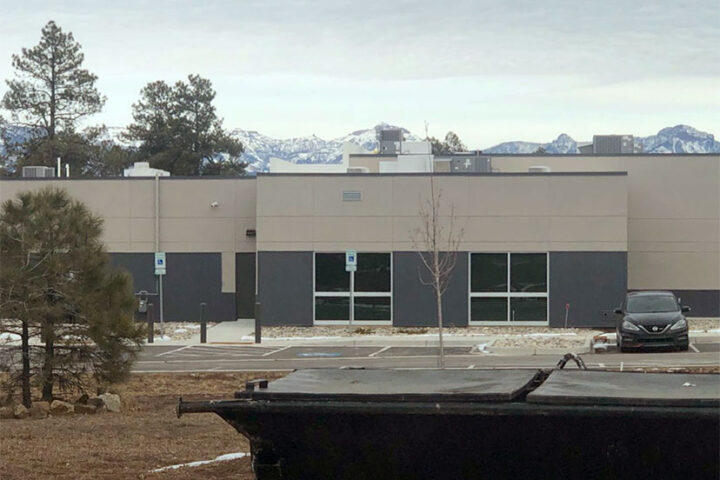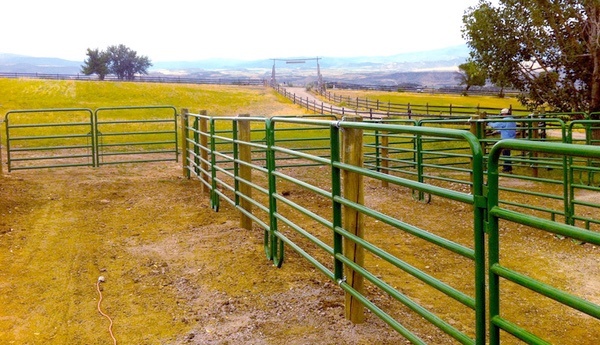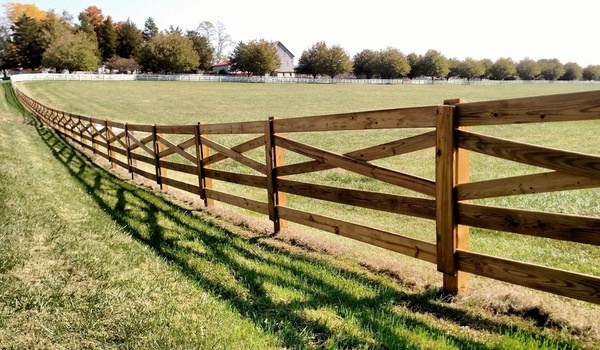Photo: The Archuleta County Courthouse in Harman Park, and is controversial roof.
The question of sovereignty has a long history here in North America, and we haven’t come close to settling the issue.
On the national level, we have the U.S. Supreme Court considering a sovereignty question. Does the government of the State of Colorado have the right to determine who appears on the ballot, during a state-run primary election for U.S. President candidates? The Colorado Supreme Court assumed that we have that right.
Down in Texas, Governor Greg Abbott has sent the Texas National Guard to the Mexico border to install razor wire, anti-climb barriers and law enforcement, to prevent the entry of immigrants into the U.S.
“In Texas, we’ve been able to achieve a decrease in illegal crossings only because of great teamwork,” Abbott said Thursday.
Except that, legally, the control of immigration is a federal responsibility… according to the U.S. Supreme Court, which recently approved the use of federal troops to remove the razor wire Governor Abbott has authorized.
Closer to home, we have a number of local governments that claim certain regulatory powers. We have occasional disagreements over who controls what.
In Part One, I shared a bit of a conversation that took place at an Archuleta Board of County Commissioner’s work session on February 6, concerning the construction of County-owned buildings located within the Town of Pagosa Springs boundaries. The Town government claims the right to issue — or withhold — building permits and Certificates of Occupancy (COs) for new County buildings. The County Attorney, Todd Weaver, disagrees with that claim.
During the discussion about County facilities located in Harman Park — within the Town boundaries — Commissioner Veronica Media mentioned her meeting with Town staff and Mayor Shari Pierce, regarding the missing ‘screening’ of mechanical devices atop the new County Courthouse… an issue which seems to be bleeding over into another another County building, proposed to be built next door. A transit facility.

Commissioner Ronnie Maez asked to hear about Commissioner Median’s experience. “And then I’ll blow up,” he said.
County Manager Derek Woodman gave a brief introduction to that intergovernmental meeting, mentioning that the Courthouse was completed two years ago, and the Town has thus far refused to issue a CO, which has prevented the County from accessing the remainder of its state grant money for that project. “To be honest, I thought we would have some concessions from the Town. But there was zero progress.”
Commissioner Veronica Medina:
“It may not have been an acceptable ‘meeting in the middle’ of what the Town offered — but to be fair, so the commissioners know what was offered — they did suggest the County putting up ‘cattle fencing’ up around those [mechanical] units. And [Town Community Development Director] James Dickhoff offered to have the Town also assist in putting the cattle fencing up. As did the Mayor.
“So those were the suggestions, of making it, one, less expensive, and two, trying to assist the County in completing that.”
Here’s a photo of the mechanical units atop the Courthouse, viewed from an adjoining property.

In my humble opinion, the units are about as offensive as the ordinary chimneys that appear atop nearly every single building in Pagosa Springs.
The Town government sees them as a violation of aesthetic values.
I was confused, listening to Commissioner Medina’s comments, as to what, exactly, the Town staff and Mayor may have meant by “cattle fencing”.
Would the addition of ‘cattle fencing’ around the existing mechanical units really make the roof of our new courthouse more attractive?
Will it make Pagosa Springs more attractive?
When I did a search for photos of cattle fencing, I found a wide range of styles.

 <
img class="alignnone size-full wp-image-114947" src="https://pagosadailypost.com/wp-content/uploads/2024/02/13-Cattle-Fencing-2.jpeg" alt="" width="600" height="384" />
<
img class="alignnone size-full wp-image-114947" src="https://pagosadailypost.com/wp-content/uploads/2024/02/13-Cattle-Fencing-2.jpeg" alt="" width="600" height="384" />
But the flat roof of a government building is typically constructed of a continuous rubberized membrane. Puncturing that membrane with any type of installation — as I understand it — can result in roof leaks, and perhaps void the warranty from the roofing contractor.
Didn’t we build this new $6 million Courthouse because of roof leaks in the old courthouse downtown?
And more importantly, perhaps, is this just a pissing contest between two rival governments?
Manager Woodman:
“One thing I will say, without question. We’re not going through the roof membrane to affix anything to that roof, because of the potential for leaks…
“So if we do anything, it will have to be supported with sandbags or some other mechanism to hold it down. Because we cannot penetrate the roof.”
Commissioner Maez:
“First of all, we need to recognize that this is taxpayer dollars. Bottom line. Who are we working for, and who do we save money for. And that’s the taxpayers…
“We need to look into this and see what we’re allowed to do, and what we’re not allowed to do. The County is exempt from this, so why do we need to comply? If the Town were building something in the County [jurisdiction] I wouldn’t push the issue. I’d let it go. Because it’s taxpayer money.
“I mean, just to get your way, throw up some cattle fence? Just to say, ‘Yeah, the County complied.’ That doesn’t even make sense.
“If we are not required to do it [according to state statute] then let’s go to court…”
Which court might that be? District court? Colorado Supreme Court?
Get the lawyers involved?
Lawyers can have their opinions about governmental sovereignty, and the meaning of state statutes, but one thing I have learned for myself, from suing our local governments: the only person who can definitively decide what is legally required, and what is legally prohibited, is a judge in a courtroom.
Nevertheless, I would like to share County Attorney Todd Weaver’s opinion.

